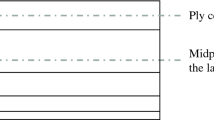Abstract
The global wind energy capacity installed in mountainous and subarctic regions is predicted to be 26% of the total 711.8 GW of cumulative power, which is expected to be installed by the end of 2020. Power losses due to ice deposition on wind turbine blades can reach up to 25% during severe icing conditions, and ice buildup poses risks because of ice throw and component wear. The impact of ice accretion on wind turbines strongly depends on the rate of accumulation and the time duration of an icing event. There is a significant amount of research on modelling ice-induced power losses accounting for either the accumulation of ice on blades or the analysis of power production data. However, there is limited work on identifying the best operational strategies during icing periods. This paper shows how the operation of a large-scale horizontal-axis wind turbine is affected by different icing events and investigates different operational strategies for reducing ice-induced power losses. The considered operational strategies include utilisation of anti-icing, operation shutdown and rotor rotational speed modifications. The NREL (National Renewable Energy Laboratory) 5 MW reference turbine is used for simulating a large-scale horizontal-axis wind turbine. Ice accretion, aerodynamic analysis and anti-icing power demand calculations have been simulated using lewINT and JavaFoil. Blade element momentum theory is used to evaluate wind turbine power performance. Ice shapes have been created for temperatures of −5 and −20 °C, considering wind speed of 15 ms−1, liquid water contents of 0.2–0.36 gm−3 and a median volume diameter of 36.10−6 m. The ice-induced losses are calculated and compared to the power required for anti-icing, thus identifying when it is preferable in comparison to an alternative strategy such as shutting down the turbine. Choosing a suitable strategy for a particular icing condition will help wind turbines to be operated more efficiently in Cold Climates.
Access this chapter
Tax calculation will be finalised at checkout
Purchases are for personal use only
Similar content being viewed by others
References
Louw A (2018) Clean energy investment trends. In: 2017
Anon, Global Wind Report, Bloomberg New Energy Finance. (2018) 1–60
Battisti L (2015) Chapter 4 icing process, wind turbines in cold climates. Springer, Switzerland, pp 177–248
Fortin G, Perron J, Ilinca A (2005) Behavior and modeling of cup anemometers under icing conditions
Tammelin B, Cavaliere M, Holttinen H, Morgan C, Seifret H, Santti K (1996-1998) Wind energy production in cold climates (WECO)
Makkonen L, Autti M (1991) The effects of icing on wind turbines. Am Soc Mech Eng 575:575–580
Myers T (2001) Extension to the messinger model for aircraft icing. AIAA J 36:211–218
Dimitrova M, Ramdenee D, Ilinca A (2011) Evaluation and mitigation of ice accretion effects on wind turbine blades, bioenergy technology (BE) World Rene
Homola M, Virk M, M Nicklasson PJ (2012) Performance losses due to ice accretion for a 5 MW wind turbine. Wind Energy 15:379–389
Zanon A, Gennaro De M, Kuhnelt H (2018) Wind energy harnessing of the NREL 5 MW reference wind turbine in icing conditions under different operational strategies. Renew Energy 115:760–772
Pederson MC, Sorenson H, Swytink-Binnema N, Martinez B, Condra T (2018) Measurements from a cold climate site in Canada: boundary conditions and verification methods for CFD icing models for wind turbines. Cold Regions Sci Technol 147:11–21
Lamraoui F, Fortin G, Benoit R, Perron J, Masson C (2013) Atmospheric icing severity: quantification and mapping. Atmos Res 128:57–75
Lamraoui F, Fortin G, Benoit R, Perron J, Masson C (2014) Atmospheric icing impact on wind turbine production. Cold Regions Sci Technol 100:36–49
Jonkman J, Butterfield S, Musial W, Scott G (2009) Definition of a 5-MW reference wind turbine of offshore system development. NREL, Golden, CO
Jonkman JM, Hayman GJ, Jonkman BJ, Damiani RR (2009) AeroDyn v15 user’s guide and theory manual. NREL, Golden, CO
Author information
Authors and Affiliations
Corresponding author
Editor information
Editors and Affiliations
Rights and permissions
Copyright information
© 2020 Springer Nature Switzerland AG
About this chapter
Cite this chapter
Stoyanov, D.B., Sarlak, H., Nixon, J.D. (2020). Operational Strategies for a Large-Scale Horizontal-Axis Wind Turbine During Icing Conditions. In: Sayigh, A. (eds) Renewable Energy and Sustainable Buildings. Innovative Renewable Energy. Springer, Cham. https://doi.org/10.1007/978-3-030-18488-9_69
Download citation
DOI: https://doi.org/10.1007/978-3-030-18488-9_69
Published:
Publisher Name: Springer, Cham
Print ISBN: 978-3-030-18487-2
Online ISBN: 978-3-030-18488-9
eBook Packages: EnergyEnergy (R0)



